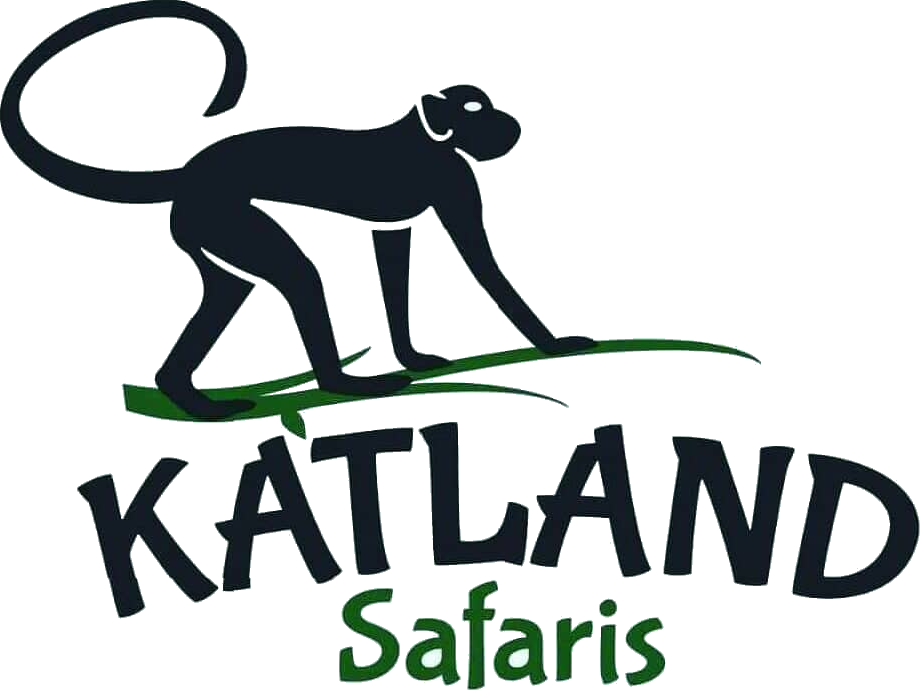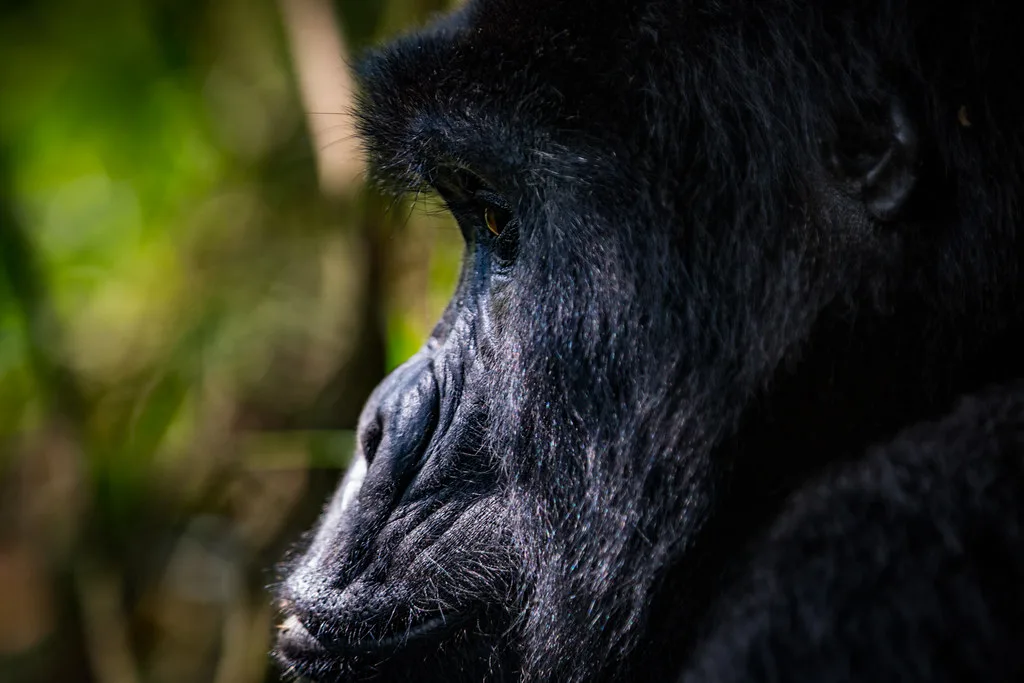Importance of gorilla tourism to Uganda
Beginning in 1993, gorilla tourism in Uganda began with the first group of visitors allowed to follow gorillas in Bwindi Impenetrable National Park. American conservationist Dian Fossey saw vices such poaching, snare setup, gorilla confinement, and others that Uganda, one of the few places home for mountain gorillas worldwide, was dealing with.
One of the ways to ensure the survival of the once critically endangered mountain gorillas was conservation of them via gorilla habituation then gorilla trekking. The Mubare gorilla family was the first group to effectively habituate the open area for tourism-related hiking in Uganda. This is within Buhoma, in Bwindi Impenetrable National Park.
Since then, Uganda Wildlife Authority has been able to habituate many gorilla families; so far, roughly 19 gorilla families are open with the aim of encouraging gorilla tourism in Uganda. Among them we have Habinyanja gorillas, Rushegura group, Bitukura gorilla family, Oruzogo gorilla family, Kyaguriro gorilla group, Nsongi, kahungye, Bweza, Busingye and Nkuringo gorilla families.
Uganda gorilla licenses now sell based more on region than on gorilla family. Buhoma, Ruhija, Nkuringo, and Rushaga areas make up the division of Bwindi Impenetrable National park.
This was done to let guests buy passes for every region. Tourists used to visit certain gorilla families in the past for personal reasons. For instance, most visitors visiting the Buhoma region gorilla families paid more than others. This produced a conservation gap, and some gorilla families had begun to revert to wild behavior—to the worse. It needed re-gorilla habituating, which takes time and money.
Value of Gorilla Tourism: Source of Income for Uganda and Funding Support for Uganda Wildlife Authority
Since it is a revenue-generating endeavor to Uganda Wildlife authority and Uganda at large, gorilla tourism is quite vital. Under charge of all Uganda National Park and generational conservation is Uganda Wildlife Authority. Sales of gorilla licenses, each valued USA Dollars 800, provide income for conservation of the endangered mountain gorillas.
Some of the funds are also used for wages for Uganda’s wildlife Authority employees stationed in national parks such Bwindi Impenetrable National Park, Queen Elizabeth National Park, Murchison falls National Park among others. Even medicine for sick mountain gorillas is purchased with this money to keep them alive.
Building of Resorts Elsewhere in Uganda
The advantages of gorilla tourism affect not just the region around Mgahinga National park or Bwindi Impenetrable National park. They extended themselves to other parts of Uganda where tourism may not be as common.
Most of the nation now has hotel facilities because to gorilla tourism. Entebbe and Kampala is the point of entrance for visitors engaged in gorilla tourism, so they require lodging at this point of arrival. Most visitors like to stay in Kampala or Entebbe at least a day before seeing either Bwindi Impenetrable National Park or Mgahinga National Park.
Among the many hotels and guest houses that welcome guests are The Boma Guest House, Protea Hotel, Lake Victoria Serena.
Because visitors to Bwindi Impenetrable National Park must stay at least two nights, may lodges have been built in many areas of the park. Some of the Bwindi Impenetrable National Park Lodges are Cloud Mountains gorilla lodge, Nkuringo camp in southern Bwindi, Gorilla mist camp, Ruhija Gorilla safari lodge, Broadbill gorilla camp in Ruhija side of Bwindi forest, Buhoma Lodge, Gorilla forest camp, mahogany springs, Silverback lodge, Buhoma community in northern Bwindi forest, Buhoma Lodge, Gorilla forest camp, Every one of these hotels has assisted in housing every kind of visitor visiting Uganda.
Thanks to gorilla tourism, infrastructure has developed.
Infrastructure in the region has grown out of gorilla tourism. Many of the roads leading to Bwindi Impenetrable national area have been rebuilt and continuously maintained to facilitate visitor transit to the area. Among the notable ones are sections of the Ishasha road linking Queen Elizabeth National Park to Bwindi Impenetrable National park and the route between Buhoma and Ruhija.
In the southern section of Bwindi Impenetrable National Park, the road to Rushaga region is under development all of which is vital in as far as gorilla tourism is concerned as well as transportation of people and products.
The need to get visitors to Mgahinga national park and Bwindi Impenetrable national park has driven domestic aviation travel to grow. Thanks in great part to Fly Uganda’s services as well as Aerolink, airstrips like Kihihi and Kisoro are very busy.
Uganda has daily scheduled flights from Entebbe to Kihihi and Kisoro respectively. Some have been able to make use of these services from hitherto inaccessible places. This is explained by the explosive gorilla tourism in these areas.
Gorilla Travel Has Made Jobs Available
People of Uganda now have jobs thanks to gorilla tourism. Many Uganda Wildlife Authority rangers, conservationists, physicians, and guides are native Ugandan people. Others work in the hotel business; others are hired by travel companies as safari advisors or guide. Every employee may pay taxes to the government and cover other obligations.
Porters at the national parks also come from the nearby town. They subsequently paid a salary which they used to cover school tuition, medical treatment, home facilitation, others, and assist carry luggage for visitors.
One approach to directly repay the surrounding community is this. It motivates them to keep preserving the mountain gorillas even if they sometimes go into the nearby town. Rather than murdering or torturing the mountain gorillas, the residents might appeal for aid from the park authorities.
Gorilla Travel Bringing Foreign Exchange Into Uganda
Traveling to gorillas has brought foreign money from people from all throughout the world. Most of the tools used for gorilla treking are purchased for in dollars, pounds, and much more. A gorilla trekking ticket now costs $800 per visitor; the lodging at the gorilla trekking parks is paid in dollars and so much more.
Travelers from the United Kingdom bring pound sterling, those from America bring US dollars, all which is utilized to import other products and services from such nations. Remember Uganda needs such currency for importing products and services.
This is so that gorilla tourism saves Uganda from lack of such. Most of Uganda’s business community imports items into their country using foreign currencies. Tour companies get money via the bank to assist the visitors on gorilla treks. These loans the Bank provides to the corporate sector help to maintain cash flow.
Other Uganda Safari activities conducted by Gorilla Tourism
Although a combined gorilla trekking with another Uganda Safari activity is its selling feature, gorilla tourism is the most chosen activity for safaris in Uganda. One such is gorilla trekking in line with chimpanzee safaris. This has also assisted in the sales of events in other national parks of Uganda.
 Visitors for gorilla tracking in Bwindi Impenetrable National Park may also visit other national parks for boat rides in Queen Elizabeth National Park and Murchison Falls National Park, chimpanzee trekking in Kibale national park all of which help to promote national development.
Visitors for gorilla tracking in Bwindi Impenetrable National Park may also visit other national parks for boat rides in Queen Elizabeth National Park and Murchison Falls National Park, chimpanzee trekking in Kibale national park all of which help to promote national development.
Standardization of Uganda Tourism Result From Gorilla Tourism
Although tourism was not a top concern in Uganda in the past, the existence of gorilla tourism has spurred efforts to control the country’s tourist industry. The Uganda Tourism Board has created guidelines for everyone in this company; courses like Bachelors of Tourism are taught in universities; many primate research both within and outside of this company is being conducted; others.
Even hotels and lodges supporting tourism are under control to provide the correct service to visitors. Under their umbrella USAGA, the driver guides routinely go through training and retreats to enhance their attitude toward visitors and equip them with fresh abilities. Activities including gorilla trekking help to partially engineer this development.
Gorilla Travel Is Provoking Safety This field
Several security agencies are in Mgahinga National Park and Bwindi Impenetrable National Park to guard the visitors and residents from outside assaults. The Interahamwe rebels used to migrate into Uganda wooded territory near Congo in the past. Uganda security organs mean they no longer pose a danger to this region.
Working with the watchful ranger guide, the Uganda security officials can provide visitors and residents of this region with the finest safety available.
Since Uganda has had bad reputation for quite some time ever since Iddi Amin was president, gorilla tourism has placed Uganda on the international map. Those who visit Uganda as tourists and environmentalists go back and disseminate positive news about Uganda and its people.
Laws of Gorilla Trekking in Uganda
The all-planned gorilla tourist operations concentrate on the preservation of mountain gorillas in Uganda. This is so because, with around 1000 gorillas, the mountain gorillas are among the endangered primates found worldwide.
These gentle giants were on the brink of extinction by 1980s, and by then their count was 300 mountain gorillas globally. A lifetime of conservation dedication has been poured into celebrating the present increment.
Rules were established and they span Uganda Rwanda and D.R. Congo to guard the lives of the mountain gorillas.
Whether for gorilla habituation or gorilla treking, no one with a communicative illness like cholera, fever, Ebola, Corona Virus, diarrhea is let approach the mountain gorillas. About 96% of these gentle giants have DNA that is like that of humans. They are very easily infected by humans.
To lower the possibility of spreading any disease to the mountain gorillas, maintain a gap of around 8 meters between you and them.
When you encounter the gorillas, keep a close group so as not to ambush them.
Should the gorillas approach you upon identification, gently back off to maintain the gap between you and them.
In case you have a camera. Because flash photography disturbs the mountain gorillas, it is forbidden. They are not used to strange light in their presence.
When approaching the gorillas, never eat or smoke at a distance about three hundred meters.
Should you need to cough or sneeze turn away or do it in your elbow from the gorillas to prevent passing any infections to them?
Bury all human faces in a pit at least thirty cm deep and make sure it is tightly packed beyond identification.
Since it changes the character of the forest, none of the garbage should be thrown there. Here is where the mountain gorillas get food.
Never spit on plants to maintain the forest free and save mountain gorilla food.
Gorilla trekking is not permitted for any youngster less than fifteen years old. The timing of finding the mountain gorillas is unpredictable during gorilla trekking, hence occasionally may take a lengthy or a short period of time.
Even the geography of this region is rugged, hence trekkers must climb hills to reach the gorillas. The initial look at the gorillas might set off adrenaline, but you should avoid displaying cargo. All the aforementioned may not be suitable for a youngster under fifteen years of age.
When with the gorillas, avoid moving unnecessarily or creating noise as you could seem suspicious to the mountain gorillas.
With the mountain gorillas, only one hour is allotted. They have been used to human presence after just sixty minutes. Since they are entirely vegetarian and have to hunt for their own food to sustain their massive bodies both throughout night and day. This is to enable them eat properly.


